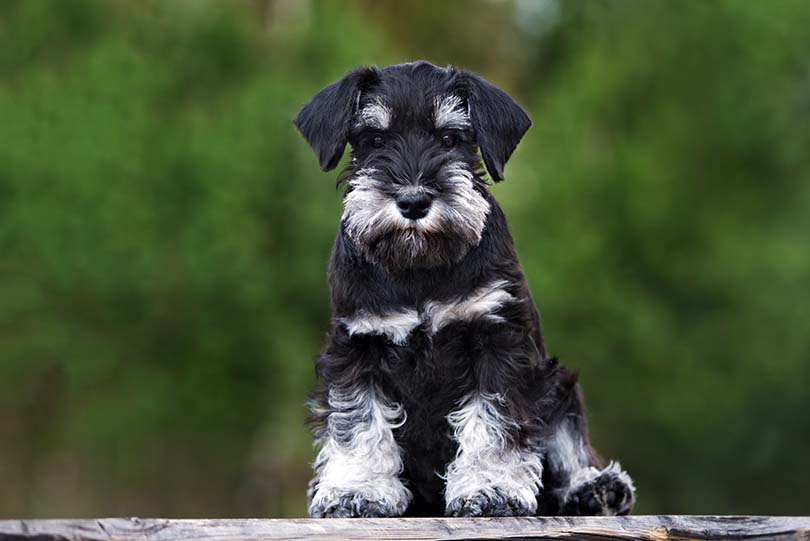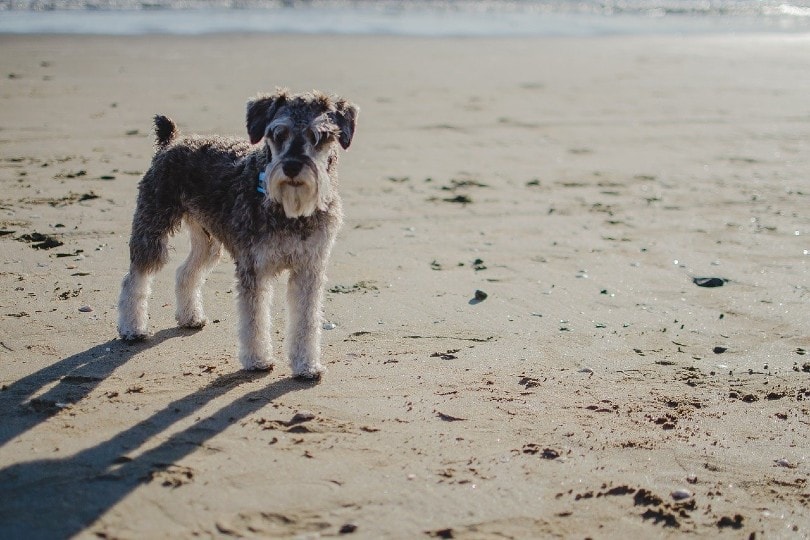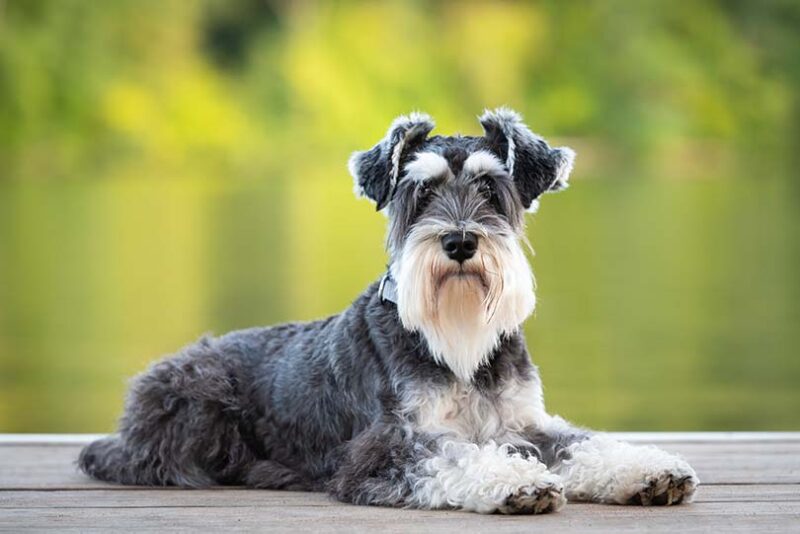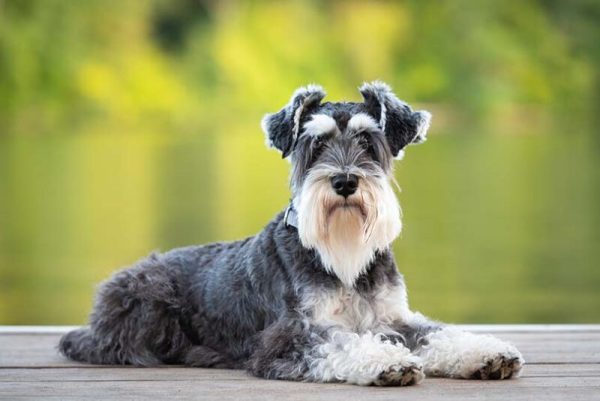The Miniature Schnauzer is a quirky, spunky, intelligent little dog with an interesting history. If you own or know one of these dogs, you may be interested to learn how the breed was developed. Miniature Schnauzers were originally used as ratters, bred to hunt and eliminate rodents. They also served as guard dogs on farms. If you’re familiar with their feisty nature, you know that this trait remains with them today. Having a Miniature Schnauzer means always knowing if something is happening on or around your property.
Let’s take a closer look at the breed’s history to understand where they came from and learn a few facts about them.
The Three Schnauzers
There are three types of Schnauzers: Miniature, Standard, and Giant. While the Standard and Giant Schnauzers are considered working dogs, the Miniature Schnauzer is in the terrier group. Their ratting abilities set them apart from the other two breeds and explain a few of their differences.
The Standard Schnauzer was the first on the scene. They were used in Germany in the 15th century as working dogs on farms. They pulled carts, guarded the farm, herded livestock, and hunted vermin. Before they were called Schnauzers, they were known as Wirehaired Pinschers in German breeding. The breed is known for having a bearded muzzle. The German word for muzzle is “schnauze.”
In the 1890s, the Third German International Show in Hanover featured Wirehaired Pointers for the first time. A dog called “Schnauzer” won first prize, eventually giving the breed their name.
Both the Giant and Miniature Schnauzer breeds were then developed from the Standard Schnauzer. Farmers wanted larger working dogs that could protect the farm and their families. They were also used to herd cattle from farm to market. Today, Giant Schnauzers often work as police, military, and search-and-rescue dogs. The breed’s size was developed by including Great Danes, German Pinschers, and Dobermans in the breeding stock. This way, the desired qualities of the Standard Schnauzer would still exist, just in a larger package.

The Origin of the Miniature Schnauzer
Just as farmers wanted a larger Schnauzer, some wanted a smaller one as a ratter that could deal with rodent control and as a watchdog that could alert people to things happening on the property. Since the Standard Schnauzer was such an ideal farm dog, it seemed that a smaller version of this breed would be perfect.
Some people believe that the Miniature Schnauzer was developed by breeding the smallest Standard Schnauzers until the resulting dogs were small enough to be considered Miniature. However, it’s more widely believed in the Schnauzer community that Miniature Schnauzers were bred from Standard Schnauzers, Miniature Pinschers, Poodles, and Affenpinschers.
The Miniature Schnauzer became a breed in 1899. The dogs were introduced to the United States in 1925 and became officially recognized by the AKC in 1926.
The first recorded use of the name Miniature Schnauzer was in 1888, regarding a dog named Findel. Many people believe that every purebred Miniature Schnauzer in the United States today can trace their lineage back to the first four dogs that arrived in the country in 1925.

Miniature Schnauzers Today
Today, Miniature Schnauzers make excellent family dogs. They left their working days behind, but they still retain their traits from their origin. These dogs are smart, sweet, and energetic. They like to be the center of attention and enjoy spending time with people. This is not a dog that likes to spend long periods alone.
Even though they began as farm dogs, they can adapt to city living conditions as long as they get enough exercise. They still make terrific watchdogs, alerting you to every perceived threat with a piercing bark.
True to their ratter roots, they also have high prey drives. Miniature Schnauzers should not be trusted around anything small and furry. They will chase squirrels, chipmunks, rabbits, guinea pigs, ferrets, and the like. On walks or outdoors, this means they can easily take off without any warning to capture a squirrel that you didn’t see. For this reason, this breed should always be leashed when in an open outdoor area.
In the house, this means your small pets are at risk. Always keep an eye on your small animals, and don’t leave them unsupervised with your Miniature Schnauzer, even if you don’t think that anything will happen. The prey drive is an instinct, and it can come out at any moment. This isn’t something that can be trained out of the dog.
In terms of maintenance, the Miniature Schnauzer will require coat trims every 5–8 weeks. This is best done by a professional who knows how to care for Schnauzer coats to keep them looking their best. Other than that, these dogs just need brushing a few times a week and baths whenever they start to smell. They are low shedding.
Final Thoughts
Miniature Schnauzers began when farmers wanted a smaller version of the Standard Schnauzer to help control the rodent population on their farms. There are three breeds of Schnauzer: Miniature, Standard, and Giant. The Miniature Schnauzer has surpassed the others in terms of popularity.
Today, Miniature Schnauzers make great family pets that are sure to keep everyone in the house entertained. They are energetic, active dogs that get along well with other animals but should not be trusted around small, furry creatures. Keep an eye on your rabbits and guinea pigs if you bring this dog into your home.
Overall, the Miniature Schnauzer is a wonderful dog that makes a great companion. We hope that you’ve learned something new about this interesting little dog today!
See also:
- 7 Miniature Schnauzer Haircuts (With Pictures)
- How Much Does It Cost to Own a Miniature Schnauzer? Price Guide
Featured Image Credit: Debra Anderson, Shutterstock












